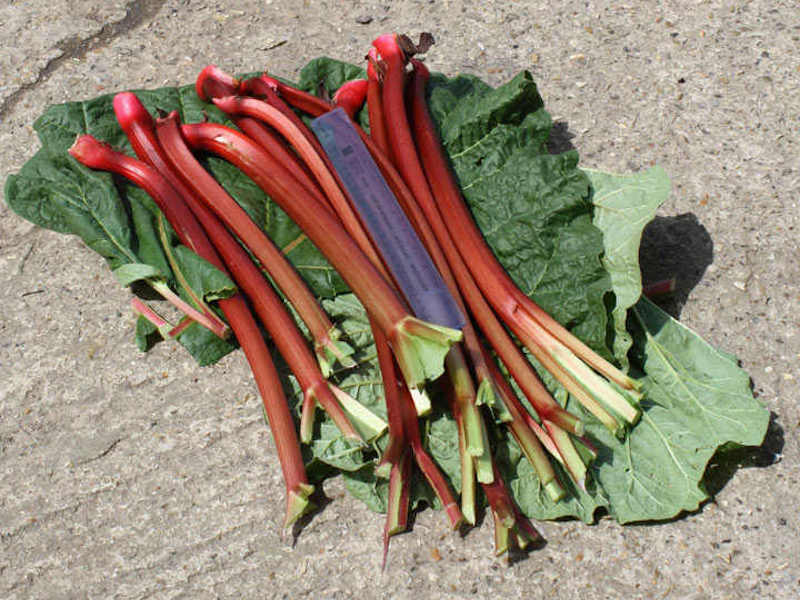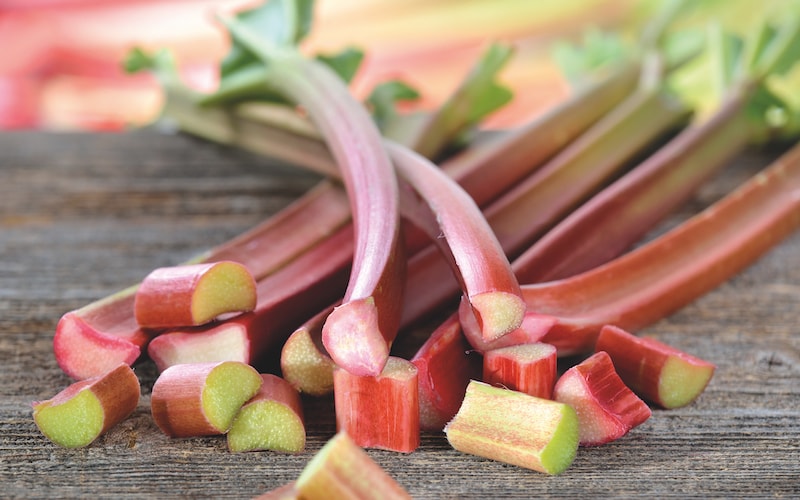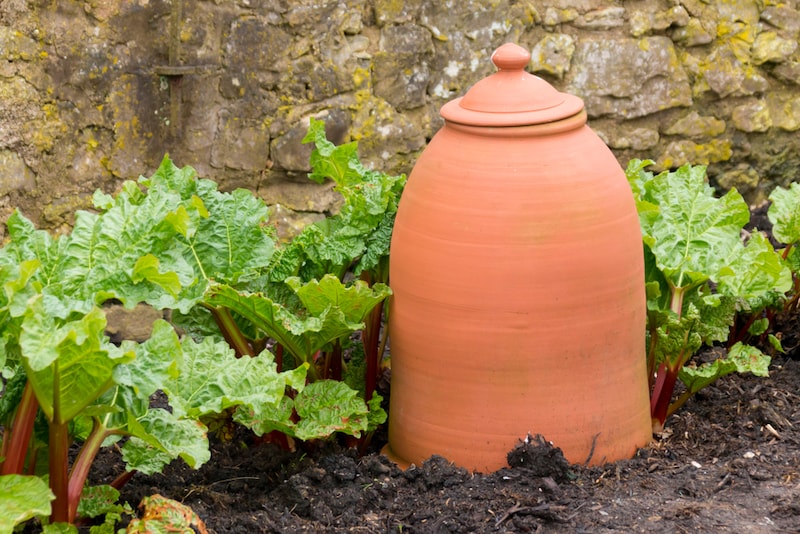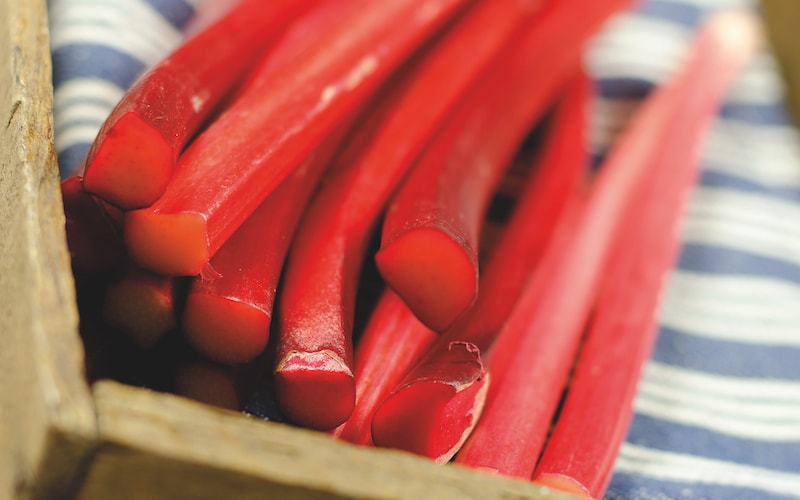Here’s our ultimate guide to planting and growing rhubarb. Producing large leaves and attractive pink or red stalks, rhubarb is a striking crop that’s easy to grow and requires very little maintenance. Read our top tips for planting, growing, forcing and harvesting this delicious treat in your own garden or allotment.
Where to plant rhubarb
Easy to grow, rhubarb is a low-maintenance perennial crop that can be grown in the ground, raised beds or large containers. It prefers moist but free-draining soil in a sunny or partially shaded position. It doesn’t like to be waterlogged, especially through the winter.
The site should be prepared by digging in plenty of organic material such as well-rotted manure or garden compost. Remove all perennial weeds.
If you prefer to grow your rhubarb on the patio, choose a deep container that’s at least 50cm wide.
When to plant rhubarb

Image: Rhubarb crowns ‘Fulton Strawberry Surprise’ from Suttons
Your dormant rhubarb crowns should be planted as soon as possible after delivery, provided the soil is not waterlogged or frozen. The best times to plant them are October to November and February to March.
How to plant rhubarb
- Plant your crowns 90cm apart with the very tips just poking out from the soil.
- Firm them in, and water during dry weather as necessary.
- Apply a 5-8cm layer of garden compost or well-rotted manure.
- In the spring, apply a top dressing of general fertiliser.
- In the autumn, when the foliage has died back, remove any dead vegetation to expose the growing points. For a successful harvest, rhubarb requires low temperatures (below 3 degrees Celsius) for about two months.
- Lift and divide established clumps of rhubarb every five years to avoid overcrowding.
How to harvest rhubarb

Image: Rhubarb ‘Sanvitos Early’ from Suttons
In your plant’s first year, don’t pick any stems to allow the crown time to grow and get established. After that, you can harvest your rhubarb every spring until early summer. Simply grasp the base of each stem, and gently pull and twist until it comes free. Never take more than a third of the stems at once, and stop picking your rhubarb in about June so that it has plenty of time to rejuvenate for the following year.
PLEASE NOTE – Only the stems of the plant are edible. Rhubarb leaves contain oxalic acid and are poisonous; do not consume.
How to force rhubarb

Image: Helen J Davis/Shutterstock
It’s possible to ‘force’ your rhubarb to crop early by covering the crowns with an upturned bucket or other vessel to exclude light. This should be done before growth commences in January.
Edible stalks will appear after a few weeks and will be blanched and sweet and tender. After a few pickings, remove the cover and allow the plant to grow normally to replenish the crown.
We hope this has given you all the information you need to grow your own delicious rhubarb. Take a look at our full set of Growing Guides for more tips and inspiration.
Lead image: Rhubarb (Rheum) Champagne from Suttons
Last Updated on November 8, 2024 by Suttons Horticultural Team





What do I do about rhubarb flower heads – cut them off?